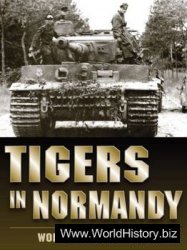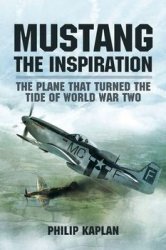Tanks and Armoured Fighting Vehicles. Early in 1915 tactical deadlock had set in on the Western Front. The combatants were deeply entrenched behind barbed wire and the only solution lay in the ability of either side to effect and exploit a significant breakthrough. Artillery bombardment and infantry assault were not enough. A new weapon was needed and technology, in the form of the petrol engine and caterpillar track, was at hand. The first batch of machines was shipped to France from the UK in strictest secrecy as “water tanks”, thus coining a name which stuck. These Mk I tanks, protected against shell splinters and small-arms fire, achieved a remarkable moral effect when first used against the Germans in September 1916, but it was not until the Battle of Cambrai (1917) that they were correctly used, in mass, to punch a hole in the main German line. The initial attack was successful but the horsed cavalry failed to exploit it and the Germans recovered. By 1918 the Allies had mustered a huge force of tanks, including faster and lighter models (“Whippets”) capable of exploiting opportunities created by the more heavily armed machines; the new branch of the service featured prominently in Haig’s decisive victories over the main German field army. Although the main thrust in tank design was initially British, the French Renault company began producing its FT17 light tank in 1917. With fully traversing turret and forward fighting compartment, it was the precursor of modern tank design.
After 1918, the British General Staff failed to develop the tank or its tactical handling; official policy discounted any Continental war, a view enshrined in the “Ten Year Rule”. However, the writings of innovative British military thinkers such as Fuller, Hobart and Liddell Hart were closely studied in Germany and elsewhere. Theories of blitzkrieg owed much to Liddell Hart’s thesis of the “Expanding Torrent” - armoured penetration exploited by highly mobile mechanized forces directed at the enemy’s rear areas. In the USSR, as in Germany, development of new tanks went ahead. Anticipating a war of manoeuvre on the open plains, the Russians
Adapted the US Christie design into what eventually became the T-34.
The Germans had been steadily moving towards the concept of mechanized all-arms fighting formations led by universal “main battle” tanks. In France and Britain, tanks were considered to be subordinate to the cavalry and infantry. Their armies went to war in 1939 with slow, heavily armoured “infantry” tanks such as the French Char B and the British Matilda, for close support of dismounted infantry. In the traditional “cavalry” roles of reconnaissance and exploitation, the British used obsolescent Vickers light tanks and a family of “cruiser” tanks which, although fast, were outclassed by the German panzers in 1940 and again in the desert battles of 1941-42. Sensational initial successes against the Russians in the summer of 1941 confirmed the validity of German armoured doctrine when used in conjunction with a responsive tactical air force. However, the massive Soviet counteroffensivess of 1942—43 were headed by the new T-34 tank, which established itself as one of the outstanding fighting vehicles of World War II. The first true Main Battle Tank (met), its robust construction, simplicity of operation, the fire power of its 76mm gun and a good power-to-weight ratio for high mobility, enabled the Red Army to fight the German panzers on far better terms than could the Anglo-Americans. German tank design veered towards the defensive in the face of mounting Soviet armoured superiority, resulting in larger machines of which the 56-ton Tiger Mk I was a good example. Mounting the celebrated 88mm gun, it was heavily armoured, sacrificing mobility. The lighter (44-ton) Panther was more agile, with well-contoured armour conferring high levels of protection. Both tanks were superior to the American and British Shermans, Churchills and Cromwells pitted against them. Experiences of the 1944-45 campaign in Northwest Europe profoundly affected British tank design philosophy, with its stress on fire power and protection.
World War II’s lessons were taken to heart by Soviet tank designers, and characteristics of the T-34 are still apparent in their latest models, designed for aggressive action, deep penetration and exploitation. They emphasize high mobility and fire power, relying on agility and compactness rather than heavy armour for protection. The Americans and British lay more stress on crew protection, resulting in heavily armoured vehicles which demand powerful engines, requiring bigger engine bays and more fuel; nato’s mbts are now considerably larger than those used by the Warsaw Pact. Russian designers opted for automatic gun loading, giving a smaller fighting compartment for a three-man crew, lower silhouette, and lighter tank.
Even in World War I, it was apparent that tanks were vulnerable when unsupported; determined infantry with well-sited anti-tank weapons could stalk and destroy tanks which were not themselves closely protected by their own infantry. In Russia, early German successes of 1941-42 were achieved because Russian tanks were isolated from their infantry and artillery support, then destroyed in detail. In the North African campaign of 1941-42, the Germans aimed to destroy the British armour with skilfully handled anti-tank guns, keeping their small but well-trained tank force intact for decisive exploitation supported by motorized infantry, once the British tanks had been eliminated. Recognizing the need for “armoured infantry”, the Allies used converted Canadian “Ram” tanks (“Kangaroos”) as personnel carriers in the Northwest European campaign of 1944—45. In postwar campaigns, the same lessons have been re-learned. On the Golan Heights in 1973, the Syrians lacked close infantry support for their tanks and suffered appalling losses, whilst the Egyptians lured the unsupported tanks of an Israeli armoured brigade into a carefully prepared ambush of well-served anti-tank guided weapons and virtually destroyed it.




 World History
World History









